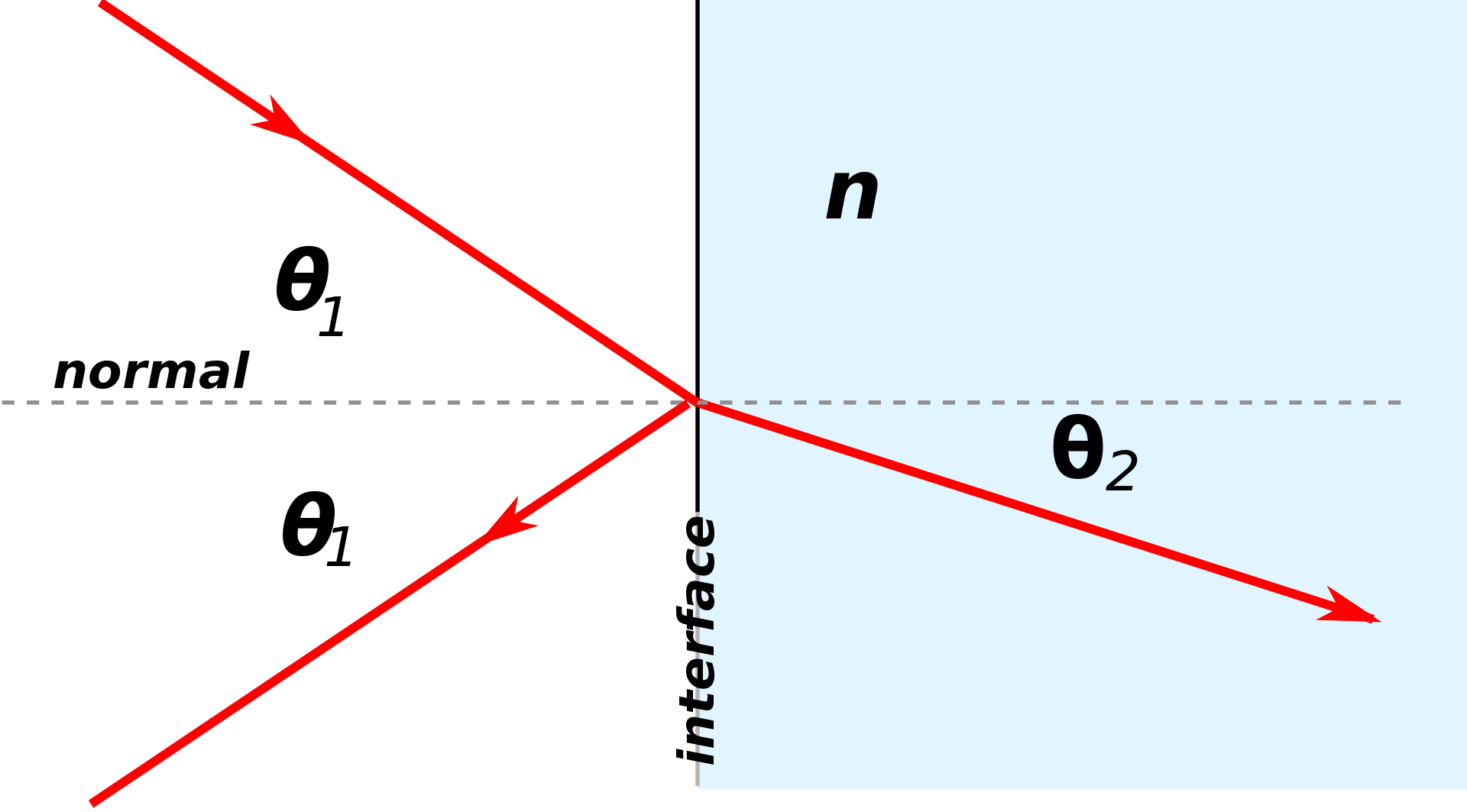Geometrical optics

Geometrical optics, or ray optics, describes the propagation of light in terms of “rays” which travel in straight lines, and whose paths are governed by the laws of reflection and refraction at interfaces between different media. These laws were discovered empirically as far back as 984 AD and have been used in the design of optical components and instruments from then until the present day. They can be summarised as follows:
When a ray of light hits the boundary between two transparent materials, it is divided into a reflected and a refracted ray.
- The law of reflection says that the reflected ray lies in the plane of incidence, and the angle of reflection equals the angle of incidence.
- The law of refraction says that the refracted ray lies in the plane of incidence, and the sine of the angle of incidence divided by the sine of the angle of refraction is a constant:
- ,
where n is a constant for any two materials and a given colour of light. If the first material is air or vacuum, n is the refractive index of the second material.
The laws of reflection and refraction can be derived from Fermat’s principle which states that the path taken between two points by a ray of light is the path that can be traversed in the least time.
Geometric optics is often simplified by making the paraxial approximation, or “small angle approximation”. The mathematical behaviour then becomes linear, allowing optical components and systems to be described by simple matrices. This leads to the techniques of Gaussian optics and paraxialray tracing, which are used to find basic properties of optical systems, such as approximate image and object positions and magnifications.


Leave a Reply
Want to join the discussion?Feel free to contribute!